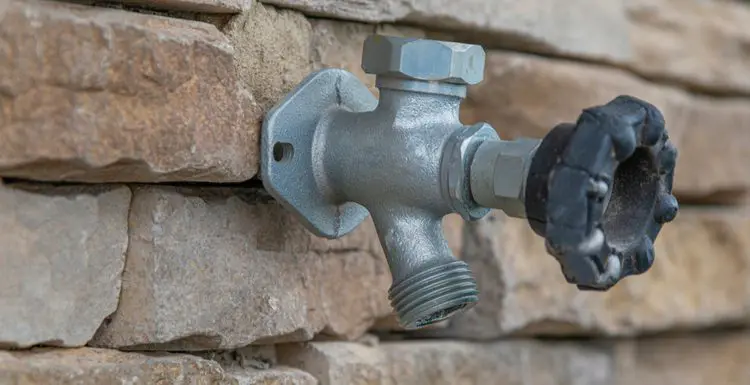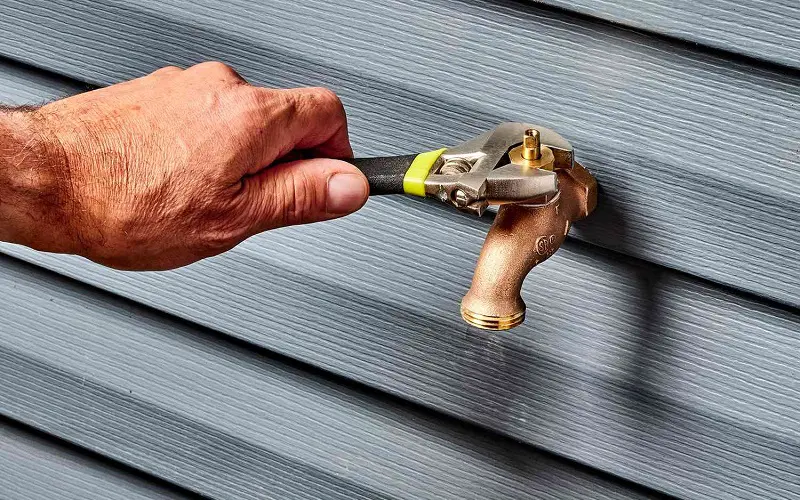There are many critical parts to an outdoor faucet beyond the water spout and handle for functionality.
Although it may be surprising, a typical faucet style on the outside of a home will consist of nine various parts.
The 9 Parts of an Outdoor Faucet
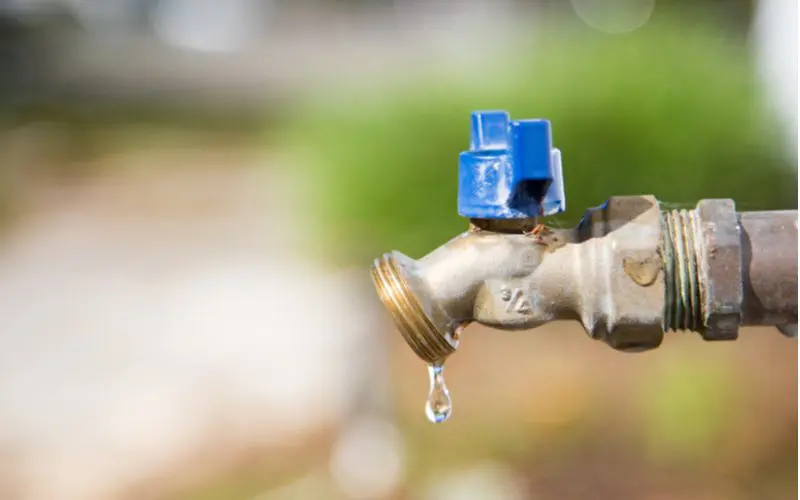
Scope Images/Shutterstock
Let’s take a look at the nine different parts that make up an outdoor faucet to give you a better idea of what it entails and how they work together.
1. Supply Pipe
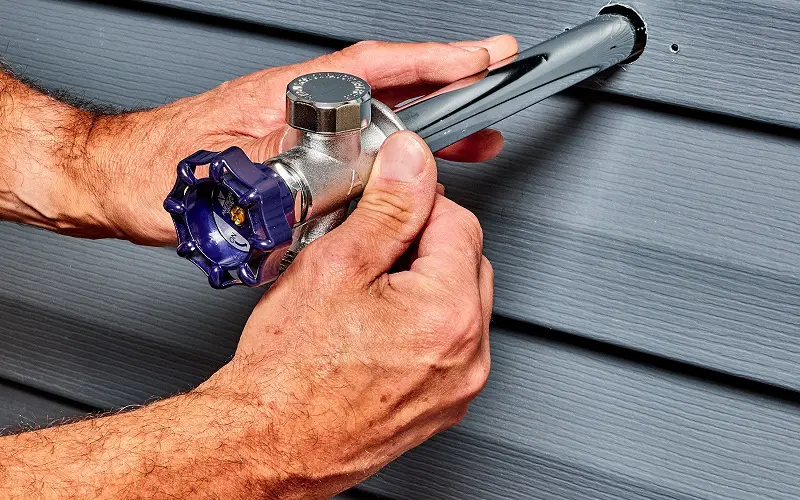
Image/thespruce.com
Although the supply pipe isn’t a direct component of the outdoor faucet itself, you can’t get water without it. This pipe comes from behind the wall mount inside the home and allows water to flow to the faucet.
In addition, the supply pipe will often have its own shut-off valve to prevent pipes from freezing and make equipment maintenance and repairs simple.
2. Wall Mount
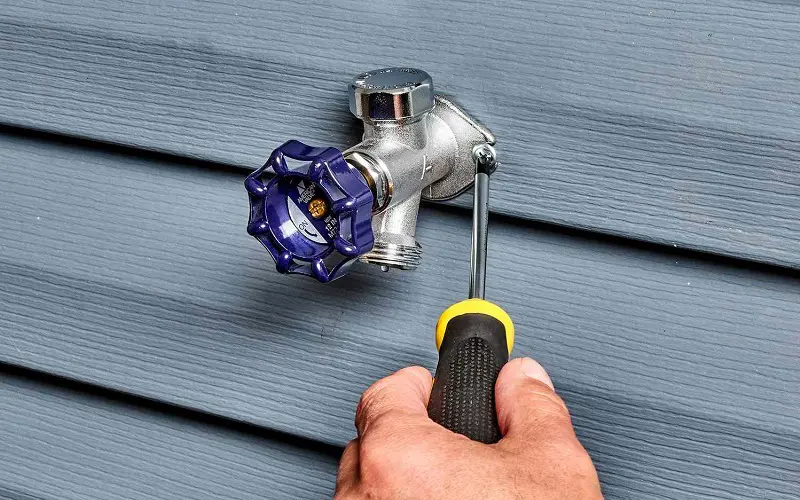
image/thespruce.com
Naturally, the wall mount is how the faucet securely connects to the home on the outside.
First, it’ll have holes to drill into the house’s exterior to keep it in place. Then, it attaches the faucet housing to the supply pipe from within the home.
3. Faucet Housing and Spigot
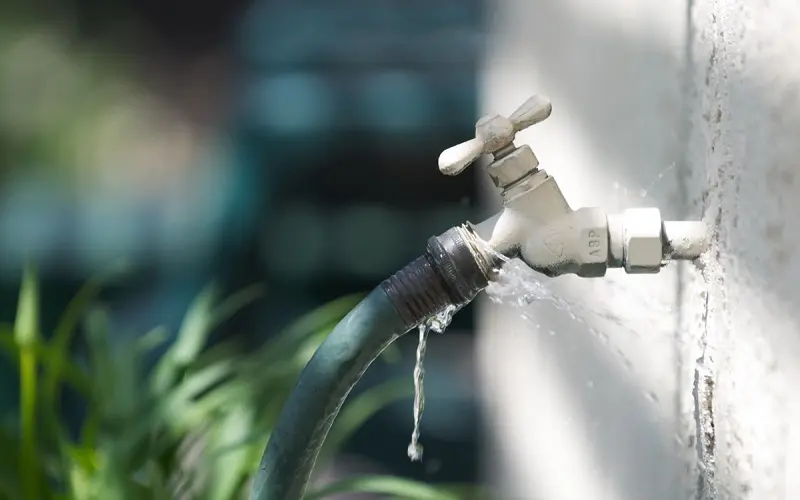
Image/spigotmaster.com
Many will refer to the entire faucet housing as a spigot, although that’s technically incorrect.
The spigot is only the end section of the water spout that uses threading to make connecting garden hoses and other attachments easier.
The faucet housing contains four crucial parts that help regulate the volume of water moving through the unit. These parts include the valve seat, stem washer, spindle, and packing washer.
4. Valve Seat
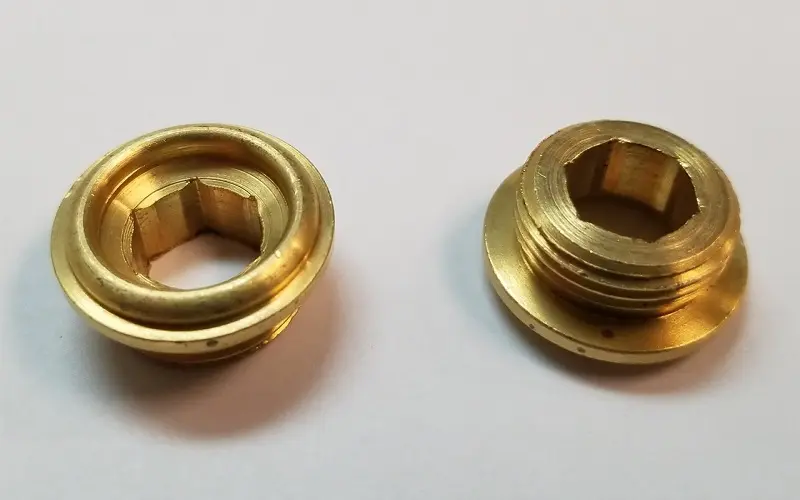
Image/noelsplumbingsupply.com
The valve seat sits inside the faucet housing beneath the stem. This critical piece helps regulate how the water flows through by having the stem washer press up against the valve seat.
Full pressure will restrict water completely, while no restriction allows water to flow freely.
5. Stem Washer
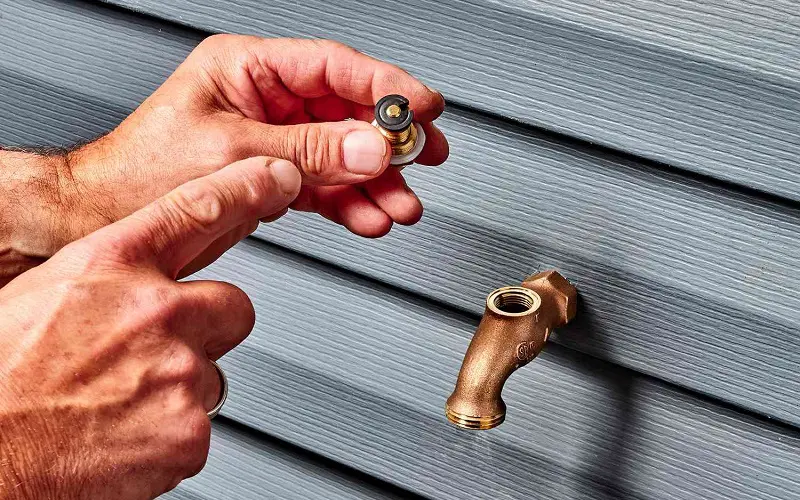
Image/thespruce.com
The stem washer is at the spindle’s bottom, just above the valve seat.
Rotating the handle right and left will move the stem washer on the spindle up and down to alter how much you want to allow through the faucet.
6. Spindle (Stem)
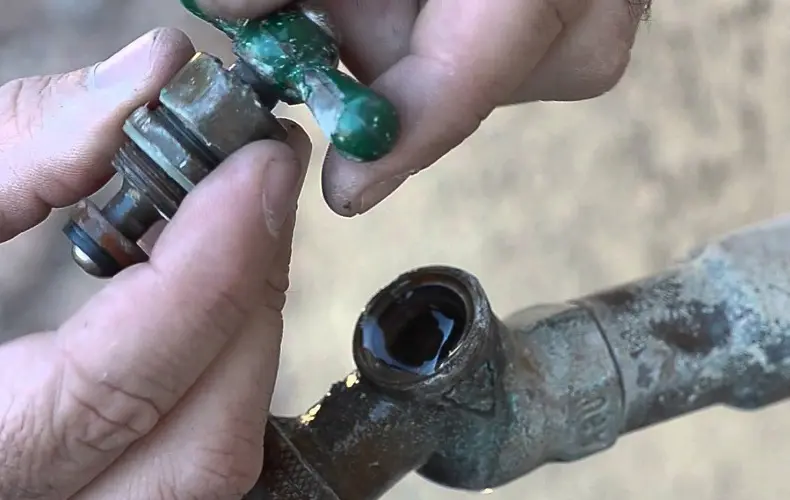
Image/simplyhometips.com
The spindle, or stem, is the long piece that runs from the handle down through the housing.
It’ll move up and down inside the faucet when you turn the handle to guide the stem washer to the valve seat, allowing or restricting water flow.
Naturally, turning the handle right will securely close the opening for water and restrict any coming out of the spigot.
Rotating the handle to the left will open the valve more, so water can flow freely. Of course, the more the spindle turns and moves up from the valve seat, the more space there is for water to go.
7. Packing Washer
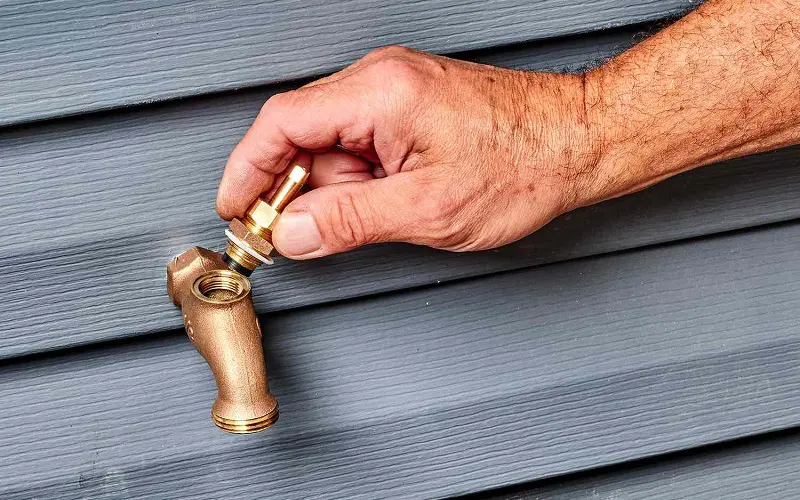
Image/thespruce.com
The packing washer sits just below the packing nut at the top of the faucet housing. It’s a small but essential piece of the unit.
It ensures that water does not flow upward and sprays out near the handle when it’s turned on. In addition, it creates an air- and water-tight seal to prevent leaks and corrosion.
8. Packing (Bonnet) Nut
The packing nut, or bonnet nut, is at the top of the housing and is the location where the handle will be secured to the faucet.
It’s typically metal and screws on securely. This piece keeps the handle in place and ensures a solid connection to the packing washer to eliminate potential leaks.
9. Handle
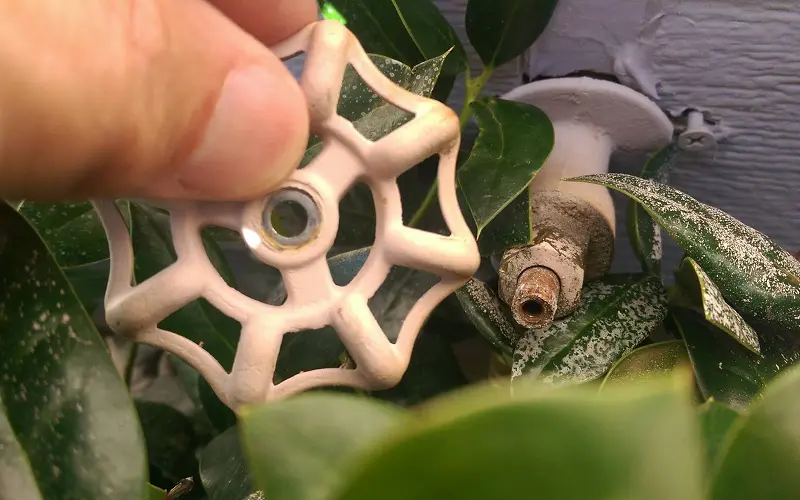
Image/life-improver.com
The handle is the top part of an outdoor faucet. Handle styles can vary from a round shape to a long, flat handle.
They are usually made of metal but can come with silicone coatings to help with grip.
Moving the handle right will close the valve seat, preventing any water from flowing, while turning it to the left will allow water to come through quickly.
Things to Consider
If you prefer to complete any repairs or maintenance jobs yourself, knowing what to look for and how to pinpoint issues with outdoor faucets can be helpful.
- Leaking water from the spigot: If tightening the handle on your outdoor faucet doesn’t stop water from dripping, you may have a problem inside the housing. If the valve seat or stem washer fails, they will allow water to trickle through, causing leaks.
- Leaking water from the handle: When water sprays up from where the handle connects to the top of the faucet, you have a problem with your packing washer. These small parts can wear out, causing leaks when you turn on your tap, forcing water up to where the handle connects.
- The handle is too easy to turn: Mechanical parts can break down over time, including the spindle. If the handle is too easy to turn and does not allow water to flow freely as it once did, the spindle may require replacing.
- Handle is difficult to turn: If you are having a hard time turning your faucet on or off, you may have the wrong size spindle for your faucet. Be sure to check all specifications when replacing parts to ensure they can work with your model.
The cost of an outdoor faucet can range greatly, depending on the style and type and whether you require a professional to install it for you or if it will be a DIY project on the weekend.
On average, a relatively inexpensive outdoor faucet will cost around $150, while having a professional install one for you that is a high-end model can run upwards of $500 or more.
Of course, other elements, including shut-off valves and supply pipes, will alter the total cost.
Frequently Asked Questions
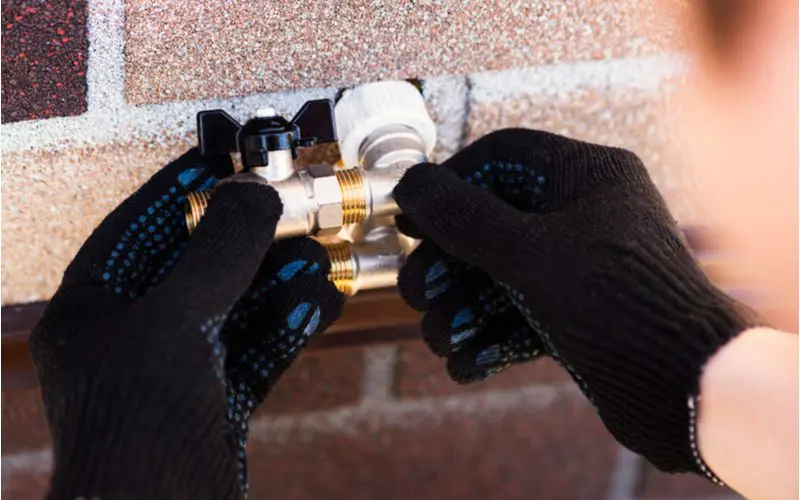
Evgeniya Sheydt/Shutterstock
Check out the frequently asked questions below for more information about outdoor faucets and related topics.
What is a hose bib?
A hose bib is the same as a spigot on the faucet housing. It is the threaded area where homeowners can attach a garden hose to the outdoor faucet. Typically, plumbers and those familiar with plumbing terms will refer to the spigot as a hose bib.
Should you turn off the water supply to outdoor faucets in the winter?
Yes, if you live in an area that sustains below-freezing temperatures, you must turn off the water supply going to your outdoor faucet during the winter season. This way, water won’t sit inside the supply pipe, freeze, and cause costly damage.
What is a bleeder cap?
Some outdoor faucet models will include a bleeder cap that sits on the side of the pipe. You can turn this by hand to bleed out any residual water in the supply pipe when getting ready for the winter season.
It is also helpful when you need to shut off the water to the faucet to do any repairs or maintenance. This way, there won’t be any water remaining in the supply pipe.
Is it possible to extend my outdoor faucet?
Yes, with the right tools and equipment, you can extend the outdoor faucet to reach farther than it is currently. Generally, all outdoor faucet equipment should be interchangeable, making it easy to adjust for different styles and types.
Vinyl plumber’s tape, a threaded connector, a pipe extension, measuring tape, and wrenches will help you extend your faucet in no time. Although, if you don’t have the tools or the time, a professional can complete this job in no time at all for you.
What happens to make an outdoor faucet not work?
There are several reasons why an outdoor faucet won’t allow water to flow. From debris stuck at the spigot to faulty interior parts or a shut-off water valve, determining the problem with a non-working faucet may take some investigative work.
What is an anti-siphon spigot?
These special spigots use a design to prevent water from backflowing into the house from an outside tap water source. This way, debris or dirty water can’t re-enter through the supply pipe and contaminate the water inside the home.
Homeowners can also obtain a separate device known as a vacuum breaker. These small pieces simply thread onto the wall attachment before the faucet housing. They help prevent water from moving back into the supply pipe without going through the process of changing the entire spigot.
So, What Are the Parts of an Outdoor Faucet?
Although an outdoor faucet contains nine different parts within this small object, it isn’t a complicated system.
Many DIYers can troubleshoot and repair any problems with their outside water source by investigating some common issues.
Knowing the various parts and their functions enables individuals to be proactive when problems occur.
This way, changing out an individual piece will be less costly and less extensive than replacing the entire outdoor faucet.

